Fabulous Dubai is the United Arab Emirates' vacation problem area. This city of tall structures and shopping centers has changed itself from a desert station to a goal of the day, where visitors run for deals, daylight, and family fun. Dubai is acclaimed for touring attractions, for example, the Burj Khalifa (the world's tallest structure) and shopping centers that come total with mammoth aquariums and indoor ski slants.
In any case, this city has numerous social features and activities, just as all the glitzy present day additional items. Take a meander around the Bastakia region, and you'll find the Dubai of old, at that point journey along Dubai Creek in a customary dhow, and you'll before long understand there's something else entirely to this city than its conspicuous facade. Become familiar with the best places to visit with our rundown of the top attractions in Dubai.
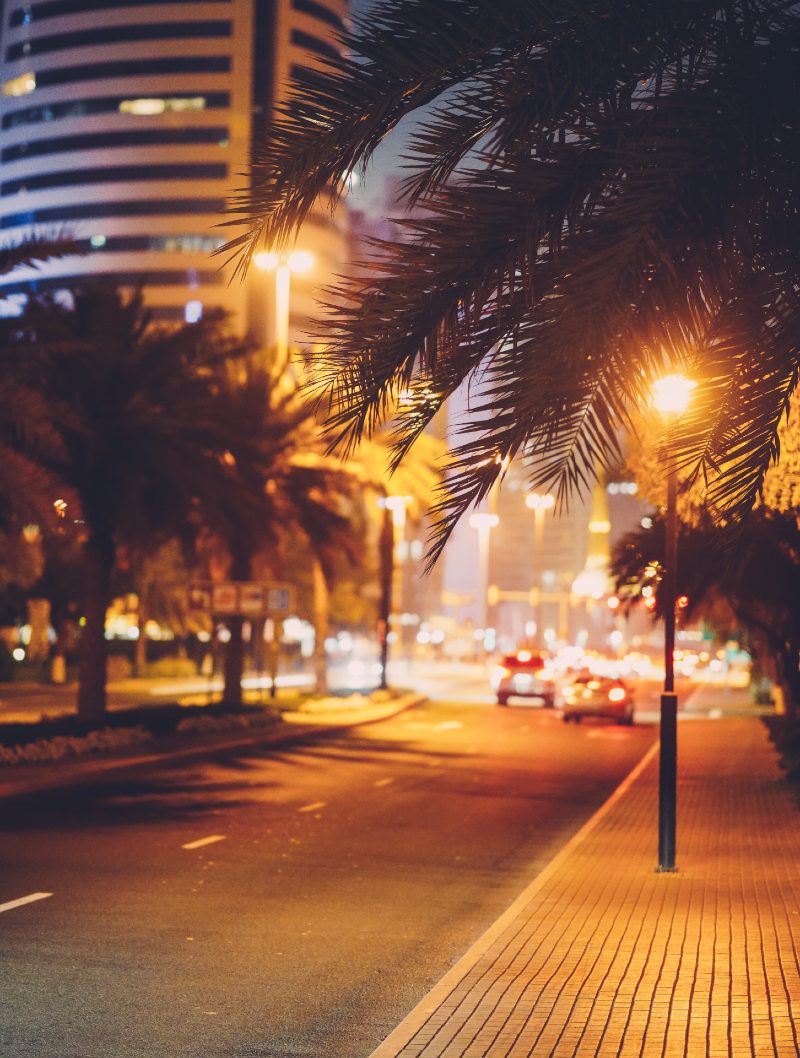
Many of these must see attractions are available on the Go Dubai Card. Choose as you go from dozens of popular Dubai attractions and save up to 52% off combined admission vs. paying at the gate. Please keep in mind that some of the attractions listed in this post are separately ticketed and may not be currently included with the Go Dubai Card. at The Top – Burj Khalifa In a city of record breakers, the Burj Khalifa could be considered Dubai’s most famous landmark, and is certainly a must visit during your trip. rising gracefully out of the desert, the Burj Khalifa is the world’s tallest building. You’ll enjoy stunning views and dramatic vistas from the top of this 163-floor structure. No trip to Dubai is complete without a visit to At The Top, the tower’s exclusive viewing deck. Spanning floors 125 and 148, At The Top gives visitors a full view of the city from the vantage point of the world’s highest outdoor observatory. From this perch, you can take in the Dubai Fountain show, enjoying the synchronized water spectacle from an eagle eye point of view. With panoramic visibility on the rest of the Emirate, it’s the perfect spot for taking photos to remember your trip. Hop On hop Off Big Bus Dubai Sightseeing Tour Dubai is a well-connected city, with most major sites and attractions branching off from its main highway, Sheikh Zayed Road. The Big Bus Dubai travels down SZR to connect you with all the top places to visit. Whether you’re interested in the traditional culture of the city’s early trading ports and souks, or the iconic modern architecture of the Burj Khalifa, the hop-on/hop-off bus lets you explore the city at your own pace. Enjoy the comfort of an air-conditioned cabin and open-top seating as you traverse the desert city. Buses come every five to 15 minutes, so you never have to worry about waiting around for long. With more than 35 stops on the entire tour and commentary offered in 12 languages, Big Bus Dubai provides interesting and entertaining background information. Royal Arabian safari & five Star Dinner at Sahara Desert Resort another bucket-list item in Dubai is a desert safari. Experience the majesty and beauty of the desert just the way the traditional Bedouins have done for generations. Climb aboard a luxurious hummer H2 or Land Cruiser and set out on your captivating nature drive. Enjoy onboard refreshments as you travel over the rolling sand dunes. Once in the desert, you can explore your surroundings further with a camel ride. Or, experience traditional Bedouin culture with henna painting before you savor a five-star buffet set-up at an Arabian fortress. Aquaventure Waterpark at Atlantis The Palm Ride the thrills and spills at Aquaventure Waterpark on Atlantis The Palm. The Palm is Dubai’s extraordinary hotel built in the center of a manmade island. It’s one of the only places on earth where you can zip through a water tunnel while sharks and stingrays swim above you. If you’re after hair-raising drops and rushing rapids, you’ll find your buzz at Aquaventure. Aquaventure also has you covered if you’re interested in lazy sunbathing on a pristine, private beach.
Burj Khalifa
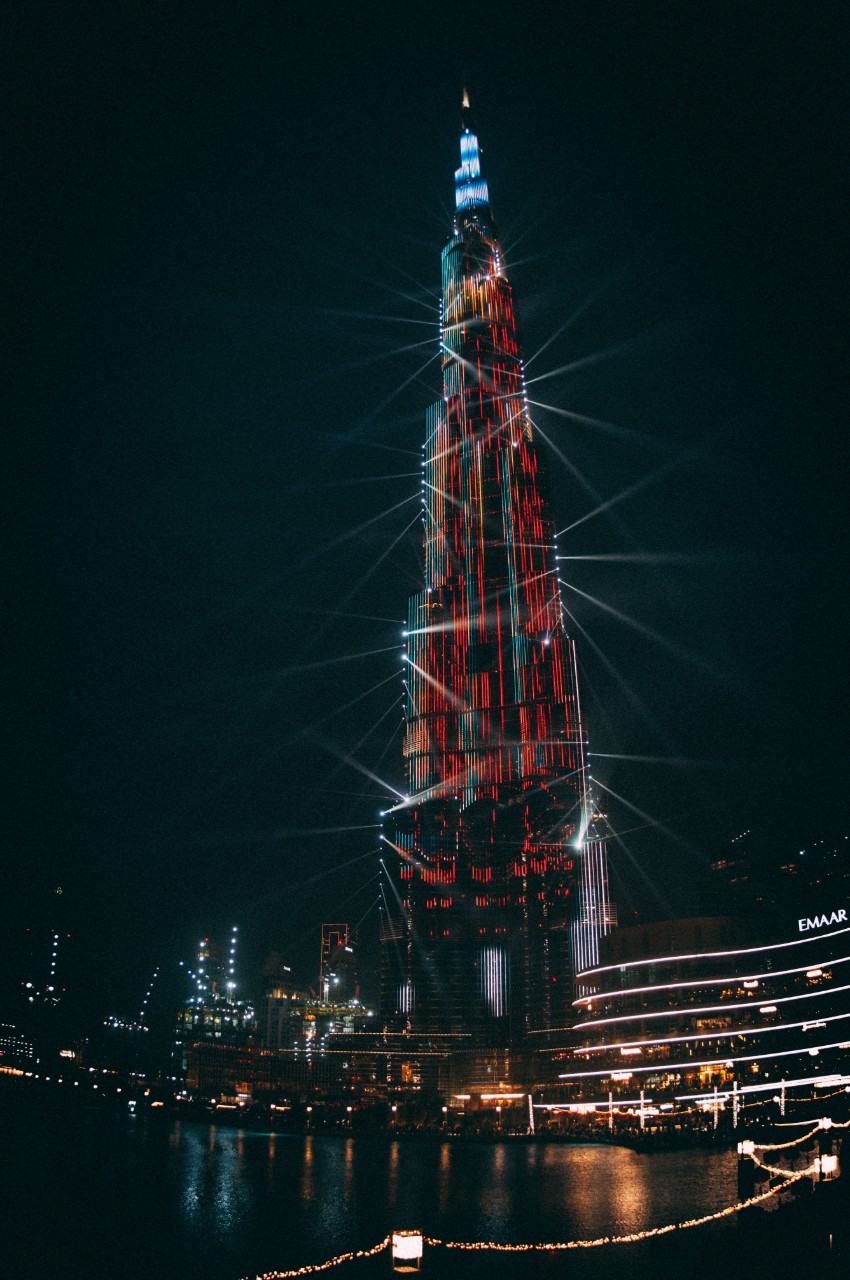
Dubai's milestone building is the Burj Khalifa, which at 829.8 meters is the tallest structure on the planet and the most popular of the city's focal points. For most guests, an outing to the perception deck on the 124th floor here is an absolute necessity do while in the city. The perspectives over the city horizon from this bird's-eye point of view are basically amazing. The smooth perception deck experience remembers a mixed media introduction for both Dubai and the structure of the Burj Khalifa (finished in 2010) preceding a fast lift marvels you up to the perception deck for those 360-degree sees out over the high rises to the desert on one side and the sea on the other.
Evening time visits are especially mainstream with picture takers because of Dubai's popular city-lights scenes. Purchase your Burj Khalifa "At the Top" Entrance Ticket ahead of time to stay away from long queue ups, particularly on the off chance that you are intending to visit on an end of the week.
Back on the ground, folding over the Burj Khalifa, are the structure's perfectly planned nurseries, with winding walkways. There are a lot of water highlights including the Dubai Fountain, the world's tallest performing wellspring, displayed on the celebrated Fountains of Bellagio in Las Vegas.
Dubai Mall
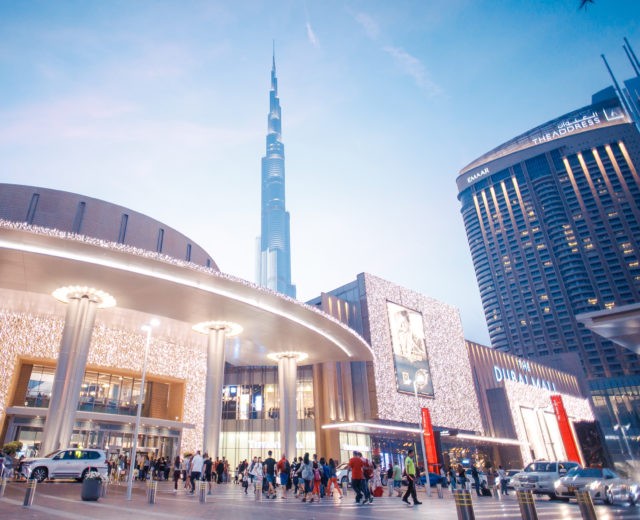
Dubai's milestone building is the Burj Khalifa, which at 829.8 meters is the tallest structure on the planet and the most popular of the city's focal points. For most guests, an outing to the perception deck on the 124th floor here is an absolute necessity do while in the city. The perspectives over the city horizon from this bird's-eye point of view are basically amazing. The smooth perception deck experience remembers a mixed media introduction for both Dubai and the structure of the Burj Khalifa (finished in 2010) preceding a fast lift marvels you up to the perception deck for those 360-degree sees out over the high rises to the desert on one side and the sea on the other.
Evening time visits are especially mainstream with picture takers because of Dubai's popular city-lights scenes. Purchase your Burj Khalifa "At the Top" Entrance Ticket ahead of time to stay away from long queue ups, particularly on the off chance that you are intending to visit on an end of the week.
Back on the ground, folding over the Burj Khalifa, are the structure's perfectly planned nurseries, with winding walkways. There are a lot of water highlights including the Dubai Fountain, the world's tallest performing wellspring, displayed on the celebrated Fountains of Bellagio in Las Vegas.
Dubai Museum
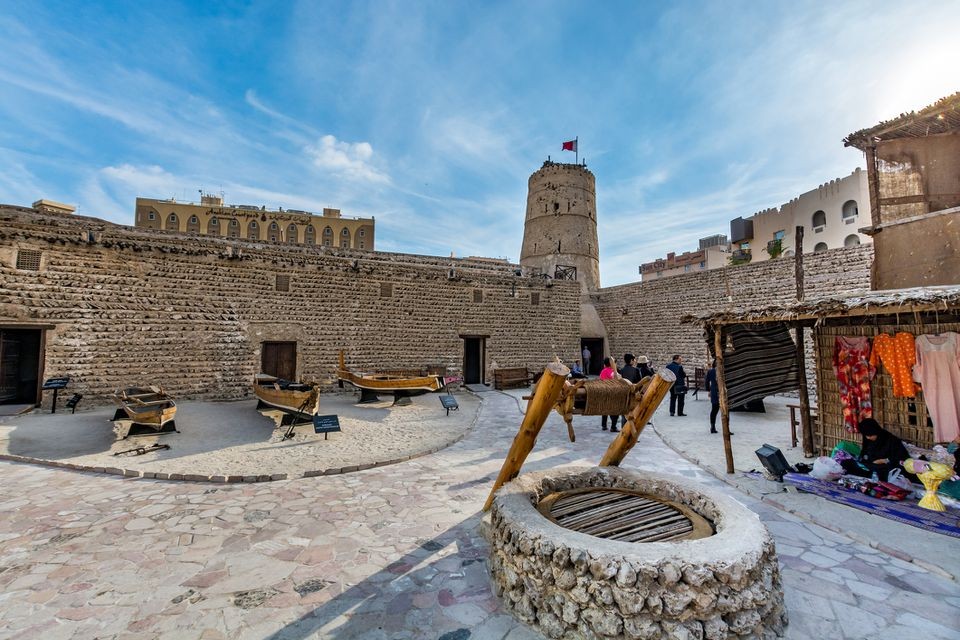
Dubai's fantastic historical center is housed in the Al-Fahidi Fort, worked in 1787 to guard Dubai Creek. The fortification's dividers are worked out of conventional coral-squares and held together with lime. The upper floor is bolstered by wooden posts, and the roof is developed from palm fronds, mud, and mortar.
In its history, the fortification has filled in as a living arrangement for the decision family, a seat of government, army, and jail. Reestablished in 1971 (and again widely in 1995), it is currently the city's chief historical center. The passageway has a captivating display of old maps of the Emirates and Dubai, indicating the mammoth extension that hit the locale after the oil blast.
The yard is home to a few conventional pontoons and a palm-leaf house with an Emirati wind-tower. The right-hand lobby highlights weaponry, and the left-hand corridor exhibits Emirati melodic instruments. Underneath the ground floor are show corridors with displays and dioramas covering different parts of conventional Emirati life (counting pearl angling and Bedouin desert life), just as relics from the 3,000-to 4,000-year-old graves at Al Qusais archeological site.
Address: Al-Fahidi Street, Al-Fahidi
Bastakia (Old Dubai)
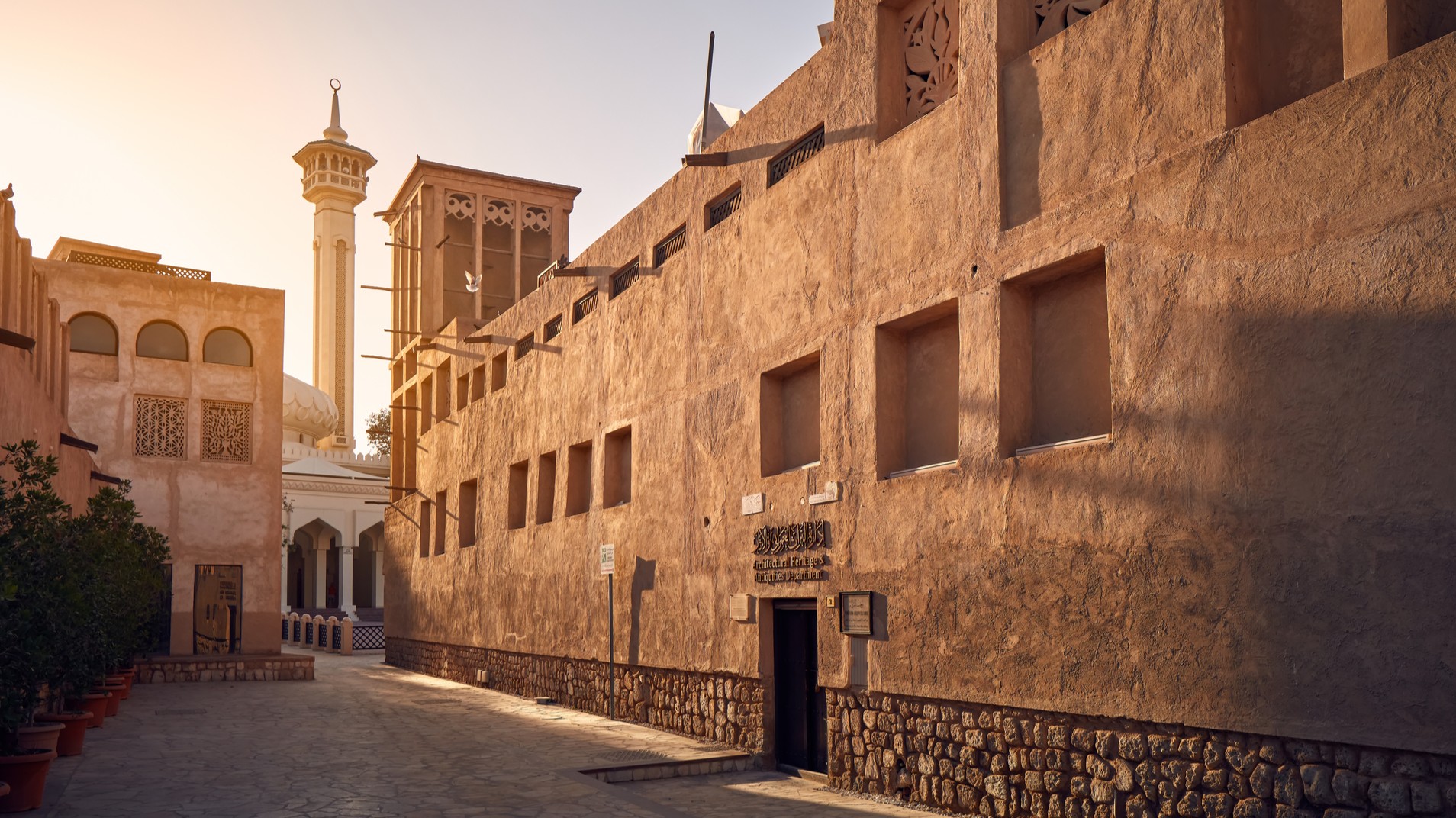
The Bastakia Quarter (also known as the Al-Fahidi neighborhood) was built in the late 19th century to be the home of wealthy Persian merchants who dealt mainly in pearls and textiles and were lured to Dubai because of the tax-free trading and access to Dubai Creek.
Bastakia occupies the eastern portion of Bur Dubai along the creek, and the coral and limestone buildings here, many with walls topped with wind-towers, have been excellently preserved. Wind-towers provided the homes here with an early form of air conditioning — the wind trapped in the towers was funneled down into the houses. Persian merchants likely transplanted this architectural element (common in Iranian coastal houses) from their home country to the Gulf.
Lined with distinct Arabian architecture, the narrow lanes are highly evocative of a bygone, and much slower, age in Dubai's history. Inside the district, you'll find the Majlis Gallery, with its collection of traditional Arab ceramics and furniture (housed in a wind-tower) and the Al Serkal Cultural Foundation, with a shop, cafe, and rotating art exhibitions (located in one of the historic buildings).
Dubai Creek & Al Seef District
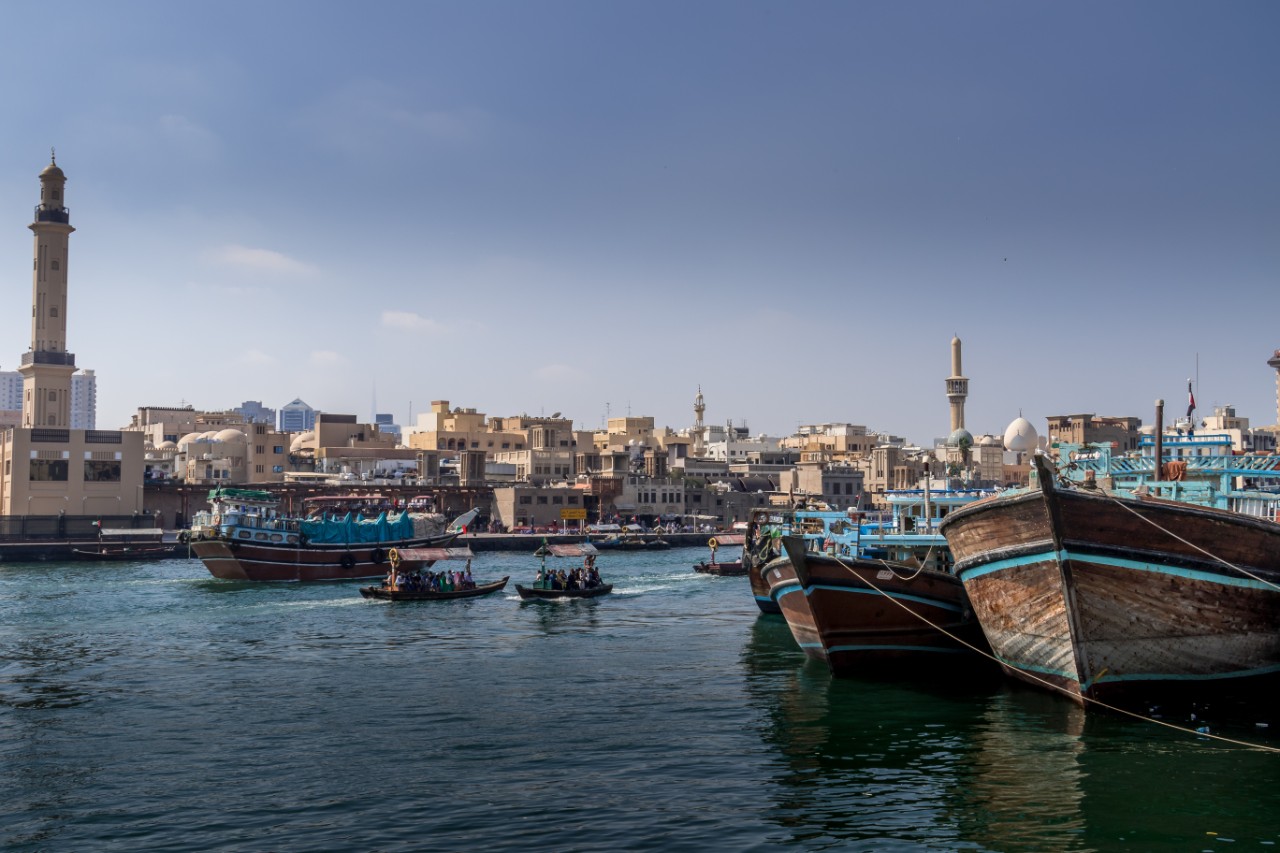
Dubai Creek isolates the city into two towns, with Deira toward the north and Bur Dubai toward the south. The river has been a compelling component in the city's development, first drawing in pilgrims here to fish and pearl plunge. Little towns grew up close by the stream as far back as 4,000 years prior, while the advanced period started during the 1830s when the Bani Yas clan settled in the region.
The Dhow Wharfage is situated along Dubai Creek's bank, north of Al-Maktoum Bridge. Still utilized by little brokers from over the Gulf, a portion of the dhows tied down here are well more than 100 years of age. You can visit here, watching payload being stacked and emptied on and off the dhows. Dhow laborers frequently welcome guests onto the vessels for a visit, where you can pick up understanding into the life of these conventional mariners. A considerable lot of the dhows here movement ahead to Kuwait, Iran, Oman, India, and down to Africa's horn. This little remainder of Dubai's customary economy is as yet a clamoring and captivating spot to meander around.
On the Bur Dubai side of the stream, scouring toward the Bastakia neighborhood, the waterfront has been recovered as the Al Seef area, with a waterfront promenade supported by customary coral-square and limestone structures, a drifting business sector, and shops selling creates. It's an incredible spot for a walk around amazing water sees.
To traverse the river, you can either travel on one of the numerous dhows that have been reestablished as visitor voyage vessels or take an abra (little wooden ship) between the ship focuses on the rivulet's Bur Dubai and Deira banks.
Jumeirah Mosque
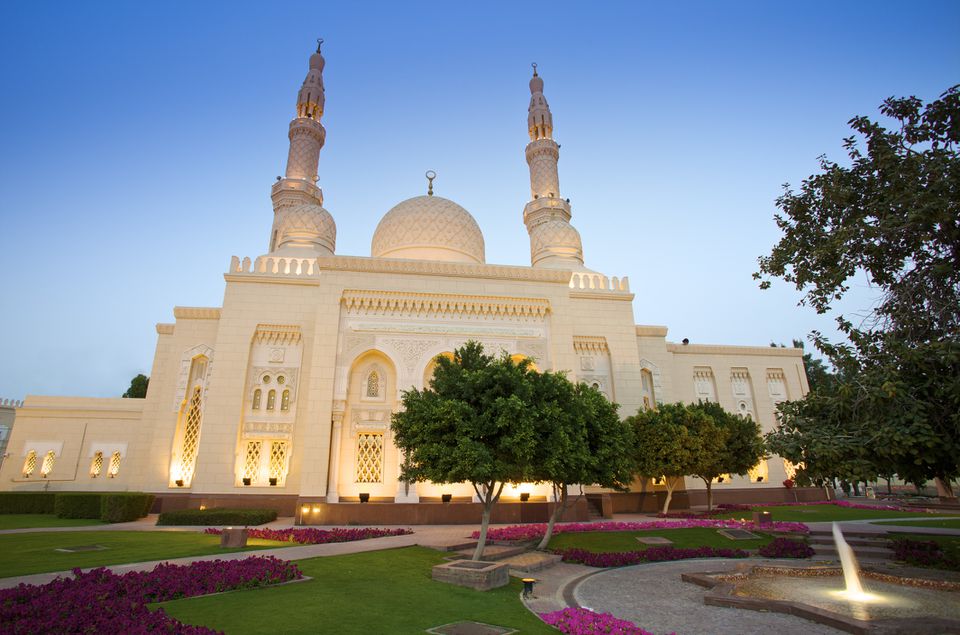
umeirah Mosque is considered by numerous individuals to be the most excellent of Dubai's mosques. A precise of Cairo's Al-Azhar Mosque, which is multiple times its size, the Jumeirah Mosque is a fine case of Islamic engineering. This stone structure is worked in the medieval Fatimid convention, with two minarets that show the inconspicuous subtleties in the stonework. It is especially alluring at night when lit with floodlights.
The Sheik Mohammed Bin Rashid Center for Cultural Understanding (which additionally runs a program of visits, addresses, Arabic classes, and social dinners) sorts out guided voyages through the mosque intended to attempt to encourage a superior comprehension of the Muslim confidence. Visits start at 10am day by day, aside from Fridays.
Deira
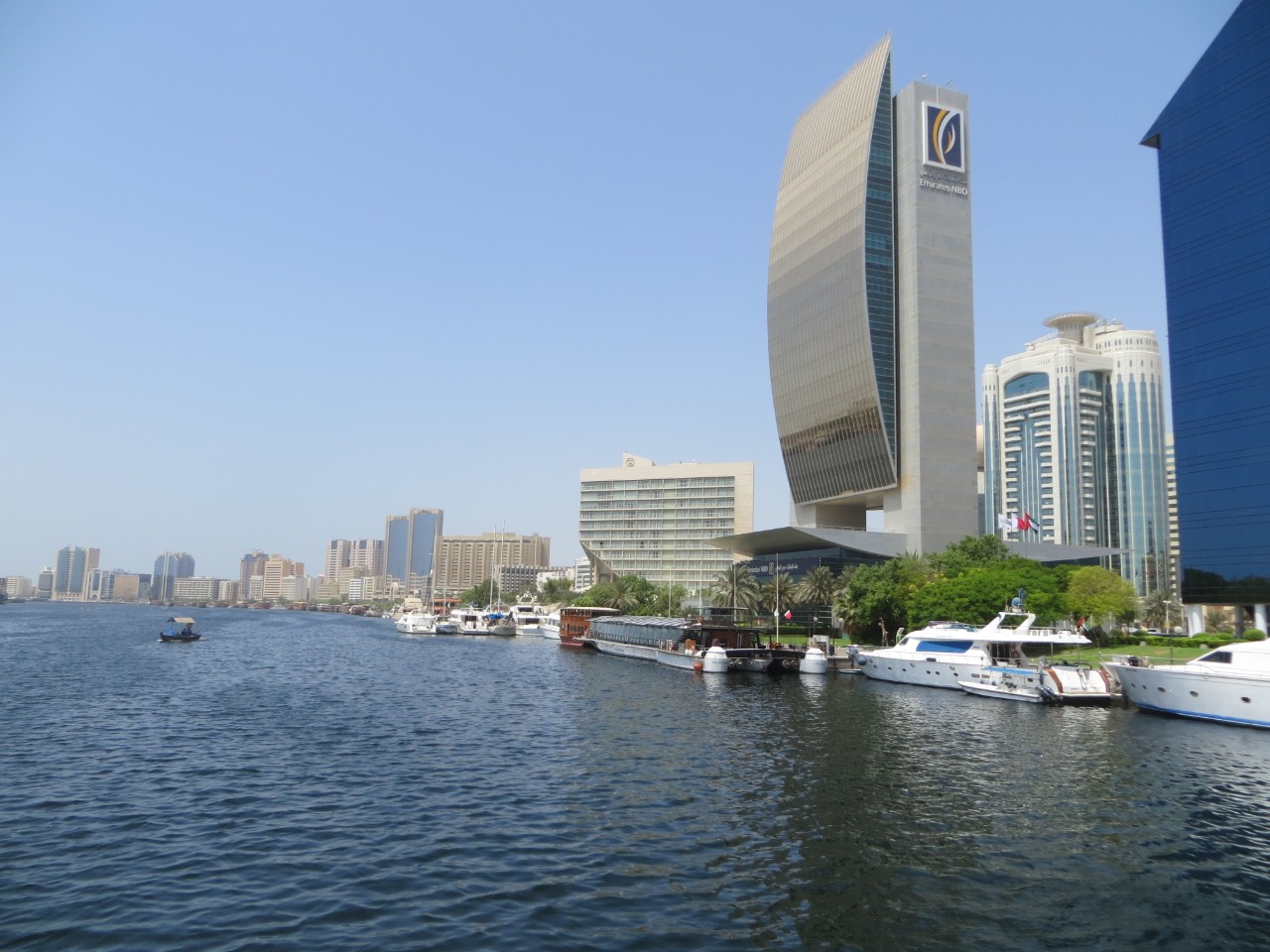
Deira lies on the northern bank of Dubai Creek, and the twisting lanes here uncover the mixture of various nationalities that have come to call Dubai home. On the shore, old dhows stack and empty with present day banks, lodgings, and places of business as a scenery.
For explorers, Deira is generally popular for its customary souks (markets), which clamor with customers consistently of the day. Deira Gold Souk is incredibly famous as the biggest gold bazaar on the planet. The Deira Spice Souk sells each believable zest, with slows down flooding with packs of frankincense, cumin, paprika, saffron, sumac, and thyme, just as the fragrant oud wood, rose water, and incense. The fish showcase gives a substantially less touristy experience.
While in the region, culture sweethearts shouldn't miss two of Deira's finely reestablished engineering diamonds. Legacy House was worked in 1890 as the home of a well off Iranian dealer and later turned into the home of Sheik Ahmed container Dalmouk (a renowned pearl trader in Dubai). Today, it's an extraordinary opportunity to see the inside of a conventional family home. The Al-Ahmadiya School, built in 1912, is the most established school in Dubai and is currently an exhibition hall of state funded training.


